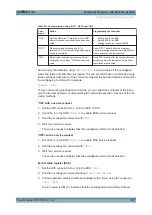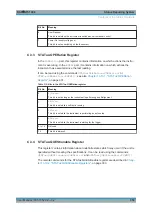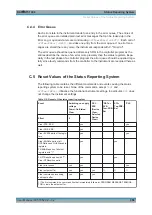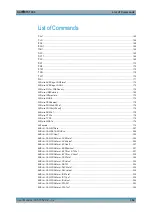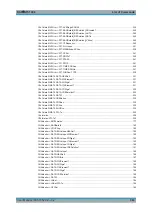
Status Reporting System
R&S
®
RTC1000
357
User Manual 1335.7352.02 ─ 02
C.4.2 Serial Poll
In a serial poll, just as with command
*STB
, the status byte of an instrument is queried.
However, the query is realized via interface messages and is thus clearly faster.
The serial poll method is defined in IEEE 488.1 and used to be the only standard pos-
sibility for different instruments to poll the status byte. The method also works for
instruments which do not adhere to SCPI or IEEE 488.2.
The serial poll is mainly used to obtain a fast overview of the state of several instru-
ments connected to the controller.
C.4.3 Query of an instrument status
Each part of any status register can be read using queries. There are two types of
commands:
●
The common commands
*ESR?
,
*IDN?
,
*IST?
,
*STB?
query the higher-level
registers.
●
The commands of the
STATus
system query the SCPI registers
(
STATus:QUEStionable
...)
The returned value is always a decimal number that represents the bit pattern of the
queried register. This number is evaluated by the controller program.
Queries are usually used after an SRQ in order to obtain more detailed information on
the cause of the SRQ.
C.4.3.1
Decimal representation of a bit pattern
The STB and ESR registers contain 8 bits, the SCPI registers 16 bits. The contents of
a status register are specified and transferred as a single decimal number. To make
this possible, each bit is assigned a weighted value. The decimal number is calculated
as the sum of the weighted values of all bits in the register that are set to 1.
Example:
The decimal value 40 = 32 + 8 indicates that bits no. 3 and 5 in the status register (e.g.
the
QUEStionable
status summary bit and the
ESB
bit in the
STatus
Byte ) are set.
Application of the Status Reporting System





